My wife used this book as reference. Page 100 has the recipe and instructions for "Snowy Moon-cake with Lotus Paste":
Singapore Hawker Food/ Jimmy ChuaThe set-up: Here's her kitchen setup. I've included notes in the Flickr image to explain what the equipment and utensils are used for (click here, or this image below):
ISBN: 9882021204
NLB Call No.: 641.595957 CJ
Click here to check for item availability.
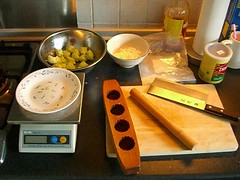
The dough -- The 冰皮 is made from fried glutinous rice flour, icing sugar, shortening, pandan essence, and water. No baking required for this type of skin. Divide the mixed dough into equal portions.
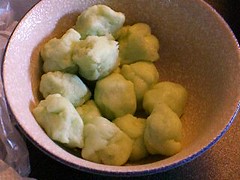
Tip from my wife: Don't make too much unless you intend to use them all. Leaving the excess dough in the fridge tends to dry them out.
Rolling the skin: Take a ball of dough and roll it, like so:
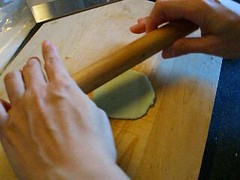
That's what the chopper is for -- to pick up the rolled skin:
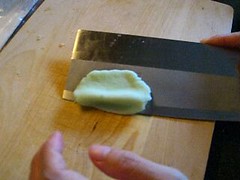
The fillings -- you don't have to make this from scratch. My wife used ready-made fillings. She divided them into equal portions and for this batch, she added almonds.
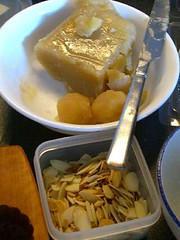
=================================
Interlude: Mooncakes, Lanterns and Legends
The Mid-Autumn Festival, which falls on the 15th day of the eighth lunar month, is also known as the Mooncake or Lantern Festival. Round 'moon' cakes with a variety of sweet and savoury fillings appear in shops, and paper lanterns of all colours, shapes and sizes are also sold.Some references to the legends associated with mooncakes here, here and here.
Several interesting legends are connected with this festival but, basically, the mooncakes signify unity and a cycle completed - traditionally, the end of the farming year and an abundant harvest.
Source: www.sg/explore/people_festivals.htm#midautumn
=================================
Putting it together -- Cover up the ball of filling with the rolled dough...

... and place the whole thing into the mold. My wife swears by wooden molds. There are different patterns to the molds. Nowadays, there are even designs with Japanese Manga characters.
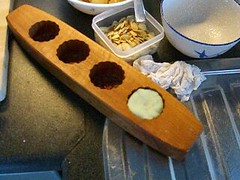
A mooncake is born! There you have it.
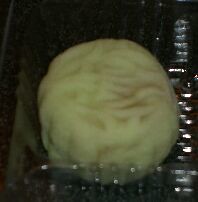
My wife packages some of them to give away to the neighbour and friends.
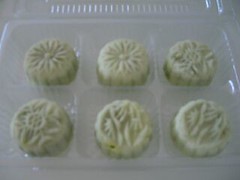
They are called 月饼 in Mandarin (月= "Moon"; 饼 = "Biscuit" or "Chinese cake"). You're supposed to eat them while gazing at the moon.
One of these nights, my wife and I (with our dog) just might go downstairs to the common garden area of our HDB apartment block, with a flask of tea, a tealight (in lieu of a lantern), a box of homemade mooncakes, and gaze at the moon -- or pretend to, if it's a cloudy night.
Tag: life long learning, singapore, distributed creativity


Thanks for sharing that, Ivan!! Your wife makes it look so easy. I hope you both enjoy your mooncakes this evening.
ReplyDeleteOh, and what was the filling for your mooncakes?
That is sooooooooo cool, Ivan! Thanks for sharing it with us...
ReplyDeleteTo CW: my wife used two types of ready-made fillings (separately) -- green-tea flavoured lotus paste, and just plain lotus paste.
ReplyDeleteTo Sybilla: Thanks. I think what's cool is that my wife learnt how to make them from a book borrowed from the library & internet resources! :)
Hi Brother,
ReplyDeletewas surprise to see so many mooncakes in the fridge when i came back last Saturday.
I must say it taste quite good. I'm impressed!
eric
Ivan: Looks like you've scored with a great post on making moon cakes... how appropriate as a bunch of us always wondered how hard it was to make. I'm featuring this on our Singapura blog! :)
ReplyDeleteHi Sybil, I only know where it's sold in Singapore -- a store called "Poon Huat" -- a wholesaler for bakery stuff, and they have retail outlets for small time purchases.
ReplyDelete